Fact-Checking Prince Philip's Portrayal on 'The Crown'
The show doesn't always paint him in a good light.
Update, 4/9: Prince Philip has passed away at 99. "It is with deep sorrow that Her Majesty The Queen announces the death of her beloved husband," the palace said in a statement.
Elizabeth may be Queen and all, but Prince Philip was still the patriarch of the royal family with massive sway. And perhaps nothing has done more to highlight that in recent years than Netflix's The Crown. Doctor Who alum Matt Smith played Philip in the series' first two seasons, Tobias Menzies took over the role for seasons three and four, and Jonathan Pryce will step in as the Duke of Edinburgh for the show's final two seasons. Here's what The Crown got right—and wrong—about the royal.
Wrong: Prince Philip didn't want to kneel to Queen Elizabeth.
Although it makes for a deliciously dramatic moment in the series, because Philip came from royalty himself, it’s considered very unlikely he would have actually had a problem kneeling to Elizabeth—it's an established sign of respect for the monarch.
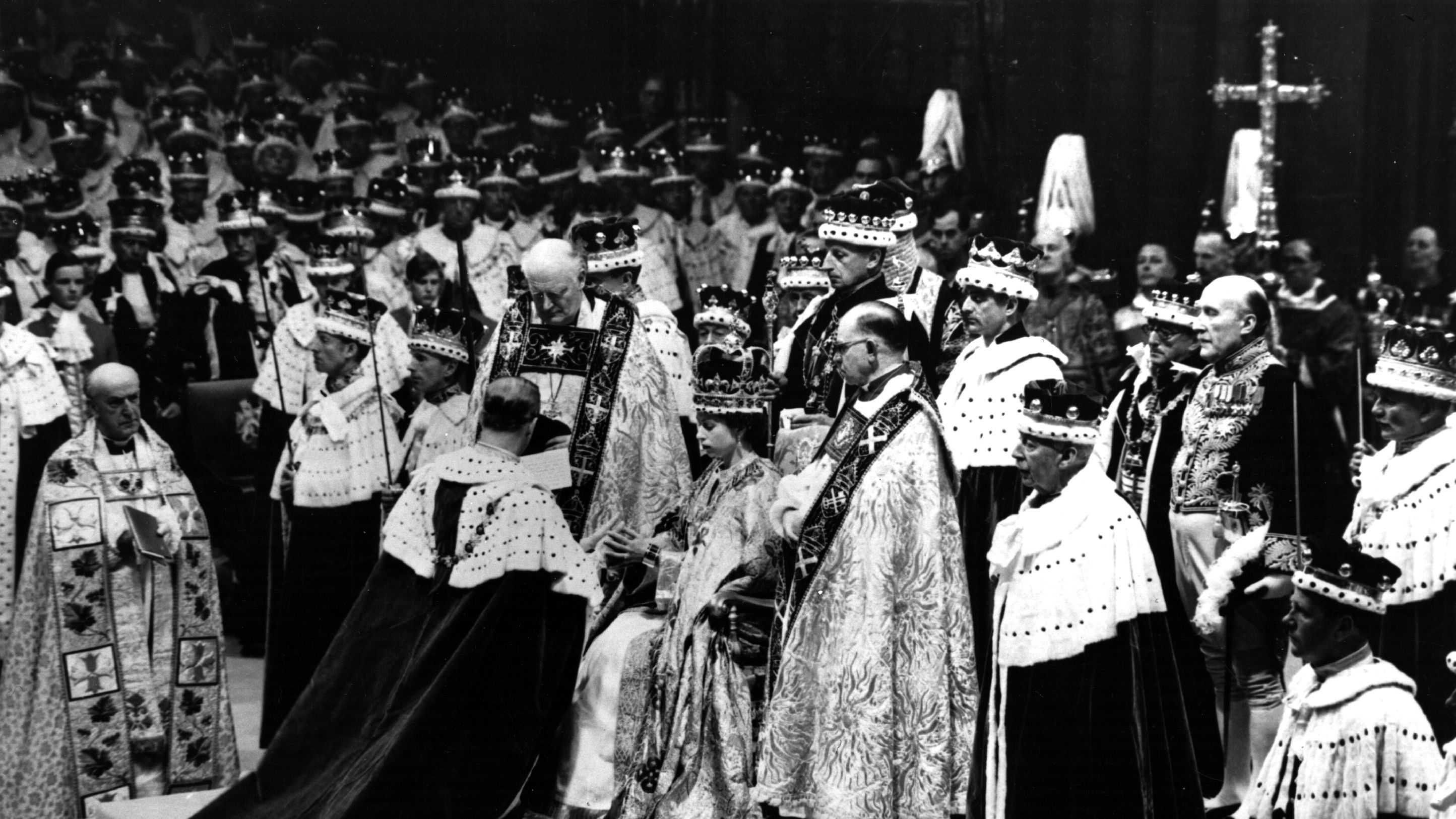
Christopher Wilson, an expert on the royal family, even said, "I doubt Prince Phillip ever spoke those words to his wife because he came from a royal household which had borrowed so much of its ritual and protocol form the British Royal Family. He knew full well what was expected of him in public, and was prepared to go along with it."
Right: He had a difficult childhood.
Seasons two and three The Crown delves into Philip's difficult (some might even say traumatic) childhood. For the most part, they got it right.
When he was young, Philip's family was pushed out of Greece during a period of political upheaval. He was actually smuggled out of the country in an orange crate. After the exile, Philip's mother had a nervous breakdown and his father moved to France, leaving Philip in Great Britain to live with various relatives.
Right: He fought to have Mountbatten become the royal surname.
In The Crown, Prince Philip is portrayed as nearly insisting that his last name, Mountbatten, be the royal surname—and the one that would be passed onto his children (instead of Windsor). He ultimately loses this fight and is not happy about it..
Get exclusive access to fashion and beauty trends, hot-off-the-press celebrity news, and more.
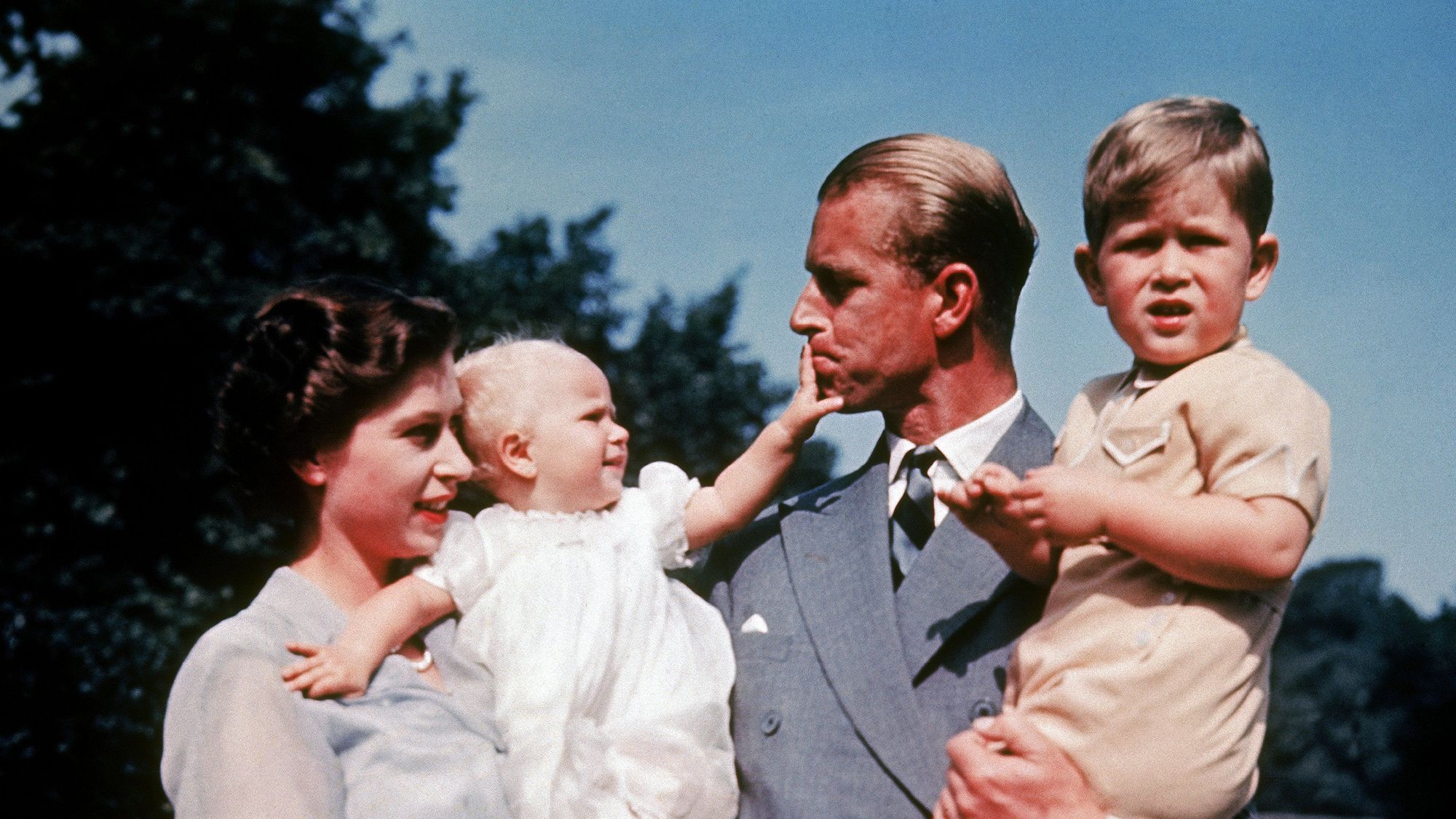
This part is legit. In Philip and Elizabeth: Portrait of a Royal Marriage, biographer Gyles Brandreth quoted Philip's private (and decidedly bitter) comments on the subject, "I am nothing but a bloody amoeba. I am the only man in the country not allowed to give his name to his own children."
Right: He later reconnected with his mother, Princess Alice.
In season three, his mother Princess Alice, who had been institutionalized or absent for much of Philip's life, is brought back from Greece (she's also a member of the Greek royal family) at the Queen's order during a period of political turmoil. Alice is flown to Buckingham Palace, where Philip avoids her at all costs. That is, until Alice gives an interview with The Guardian journalist John Armstrong during a period of bad press for the royals. Armstrong writes a rosy profile of her that humanizes the royal family in the public's eyes. Philip approaches his mother to thank her, and the two begin to mend their relationship.
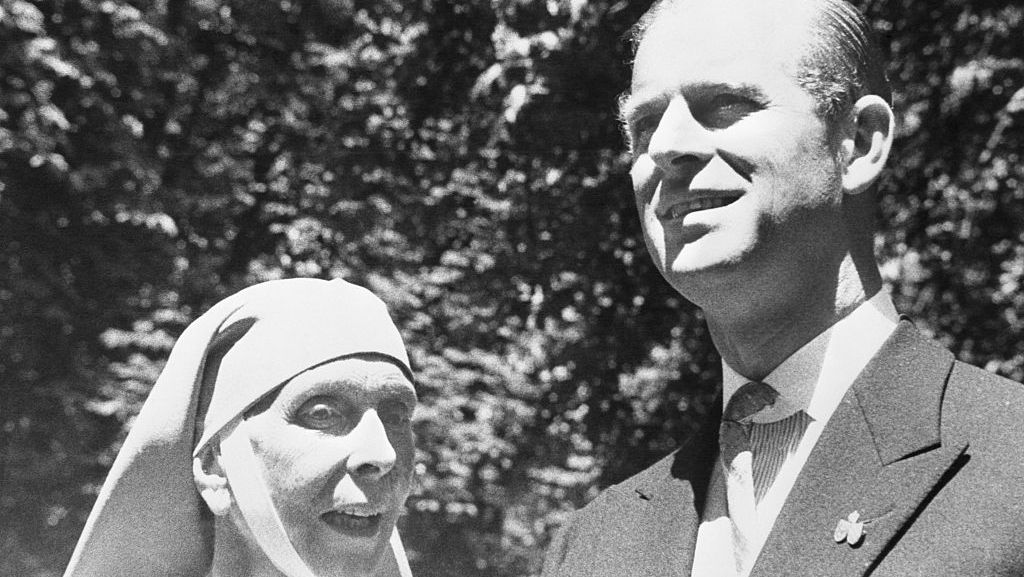
This is true, although the circumstances were a little different than The Crown portrays. There was no John Armstrong, and there was no Guardian article. But Alice did return to Buckingham Palace in 1967, and it's thought that she and Prince Philip were able to reconnect at this point. They remained close until her death in 1969.
Wrong: His parents blamed him for his sister's death.
The Crown implies, in season two, that the horrible plane crash that led to Philip's sister Cecile's death was, at least in part, his fault. Not so. Although The Crown suggests that Philip's sister planned to skip the wedding that required her to fly, and only changed her plans after Philip got in trouble at school, royal historian Hugo Vickers told Vogue that this wasn't the case.
"There was no fight, almost certainly no half-term, and Prince Philip would not have gone to Germany anyway. His sister was always coming to the wedding."
As a result, Philip's family would have had no reason to blame him for his sister's passing.
Wrong: Philip was a part of the Profumo Scandal.
In its second season, The Crown insinuated that Prince Philip was involved in the Profumo Affair, a sex scandal that rocked 1960s Britain. The show depicts Philip as away from the Palace, attending the infamous sex parties for several nights.
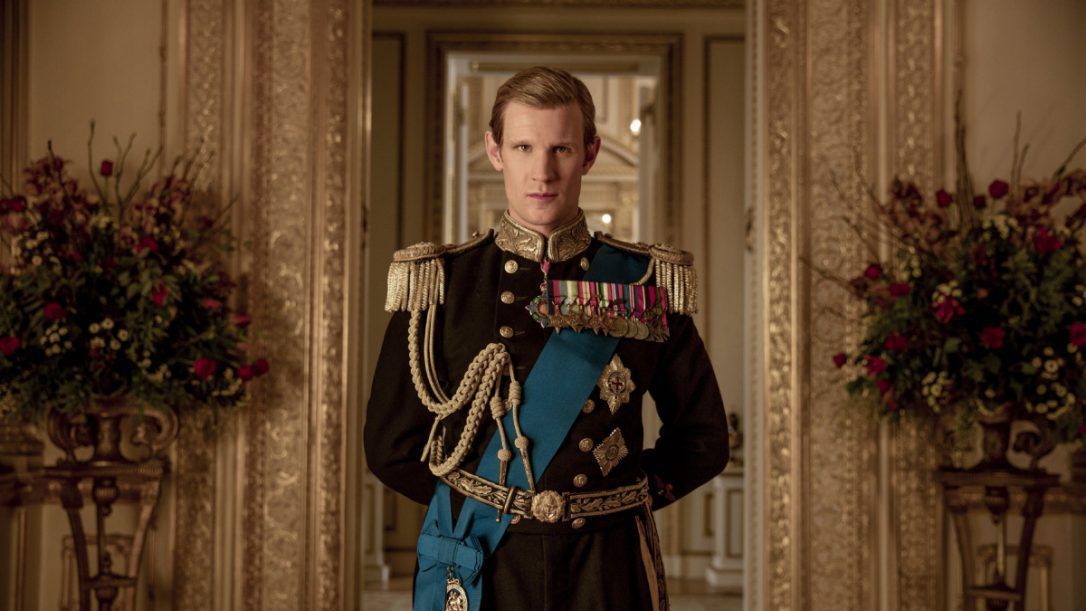
In real life, the Profumo Scandal happened in 1963 and involved Minister of War John Profumo's affair with 19-year-old Christine Keeler. Keeler was allegedly introduced to Profumo at one of these parties, at which a man named Stephan Ward would arrange for women to, um, entertain important men. Buckingham Palace has always denied Philip's involvement and maintained that there is no direct evidence that he was involved in the scandal at all.
Wrong: Philip's reaction to the moon landing.
In season three, Philip is middle-aged and feeling lost. A former pilot, he becomes fixated on the Apollo 11 mission, and is overjoyed when the moon landing is a success. When the three astronauts visit Buckingham Palace as part of the post-moon landing world tour, Philip is exuberant—until he gets to sit down with the astronauts in private, and is devastated to discover that they're normal, generally unremarkable young men who happened to play a large role in a remarkable period of world history.
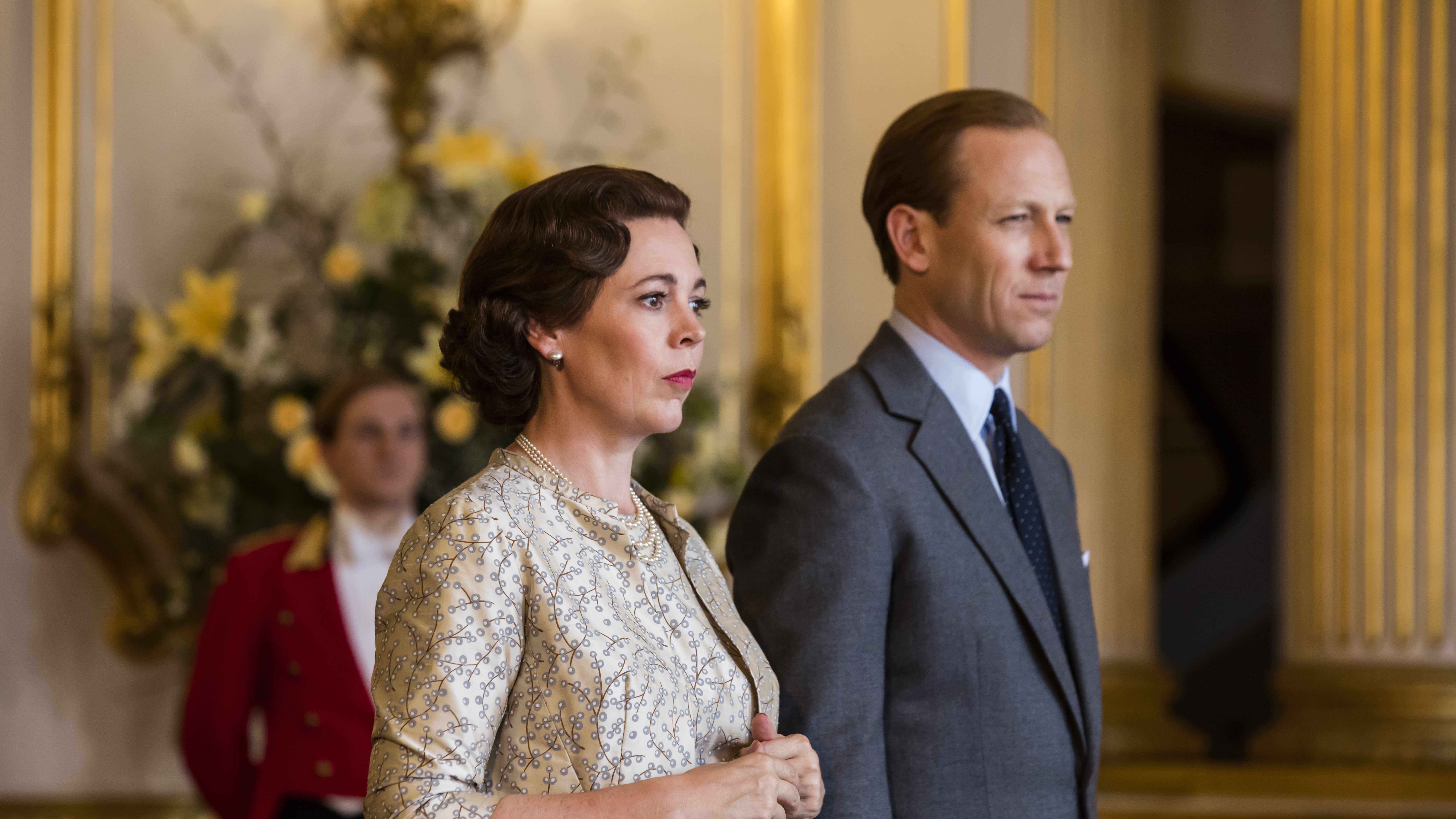
Though Philip did meet the Apollo 11 astronauts when they visited Buckingham Palace, there's no evidence that he sat down with them privately, nor that he ever took an especial interest in NASA or the moon landing.
Wrong: Philip's connection to the Parker divorce.
The Crown doesn't shine a kind light on Philip in season two (or ever, really). One storyline that seemed particularly damning was the one surrounding the Parker divorce. In the show, Prince Philip and his good friend and private secretary Michael Parker set sail on the royal yacht Britannia for an official tour of the Pacific. In the series, Parker writes letters back to the Thursday Club, of which they were both members, implicating both Philip and himself in adulterous and other unsavory activity.
On The Crown, Parker's wife, Eileen, uses the letters to file for a divorce on the grounds of adultery. While the Parker divorce really did happen in 1958 (and was considered scandalous at the time), there is no evidence that the letters were real.
Right: Philip's connection with St. George's House.
In "Moondust," Prince Philip is introduced to the idea of St. George's House by the then-Dean of Windsor, Robin Woods, and pooh-poohs the idea. Later in the episode, after his moon landing-related existential crisis, he comes around to the idea of St. George's House becoming a place for spiritual development.
In Robert Lacey's The Crown: The Official Companion, Vol. 2, published in tandem with the third season of the series dropping on Netflix, Lacey confirms that St. George's House was instrumental to what he terms Philip's "late-life religious awakening." In an extract published to The Daily Beast, he writes: "The Prince had found the challenge he had been seeking, coaxing him out from behind his hard-built psychological defences." Philip is listed as the formal co-founder of the House, along with the late Dean Woods.
Right: Philip's relationship with Princess Diana.
There's a sweet moment in season four in which Prince Philip takes a young Lady Diana Spencer under his wing while she's spending a weekend at the royal family's Scottish country home during her courtship with Prince Charles. Charles' marriage proposal is then shown to arrive soon after Philip takes him aside for a chat about Diana.
While Philip and Diana probably didn't ever team up to track down a rare stag on the grounds of Balmoral Castle, by all accounts, Princess Di did share a close bond with her father-in-law from the very beginning. According to the biography Prince Philip Revealed, by Ingreid Seward, "When Diana first joined the royal family, it was Philip who came to her aid, sitting next to her at black-tie dinners and chatting to her while she learned to master the art of small talk."
Prince Philip also maintained a friendly correspondence with Diana via snail mail; leaked letters have revealed he was largely on Team Diana amid Charles' affair with Camilla Parker-Bowles. "I cannot imagine anyone in their right mind leaving you for Camilla," he wrote at one point, adding at another, "Charles was silly to risk everything with Camilla for a man in his position. We never dreamed he might feel like leaving you for her. Such a prospect never even entered our heads."
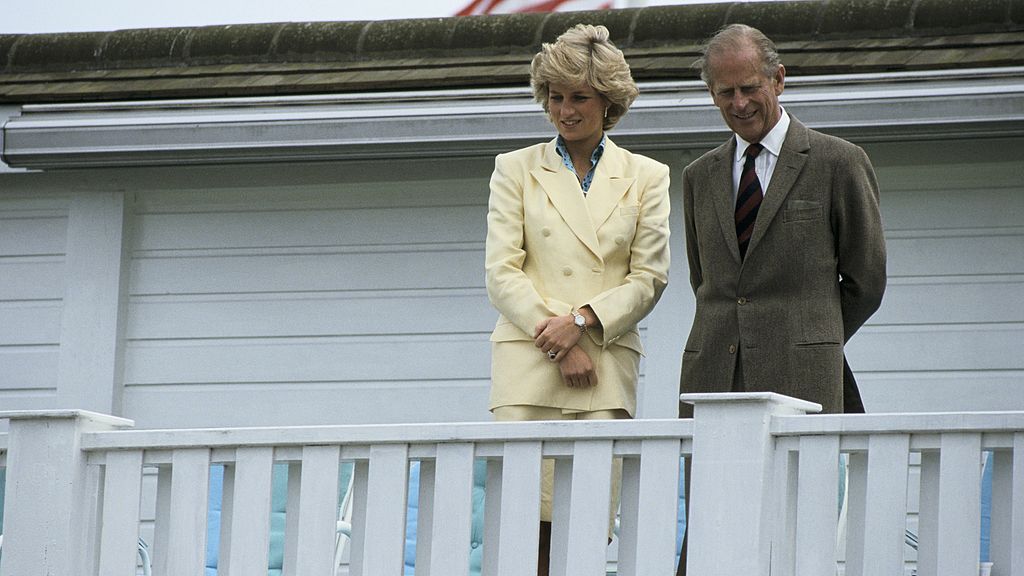
Princess Diana and Prince Philip in 1987.
In a statement released following Philip's passing, the show's creators said: "Netflix, Left Bank Pictures, Sony Pictures Television and the production team on The Crown are deeply saddened to hear of the death of The Duke of Edinburgh."
Kayleigh Roberts is a freelance writer and editor with over 10 years of professional experience covering entertainment of all genres, from new movie and TV releases to nostalgia, and celebrity news. Her byline has appeared in Marie Claire, Cosmopolitan, ELLE, Harper’s Bazaar, The Atlantic, Allure, Entertainment Weekly, MTV, Bustle, Refinery29, Girls’ Life Magazine, Just Jared, and Tiger Beat, among other publications. She's a graduate of the Medill School of Journalism at Northwestern University.